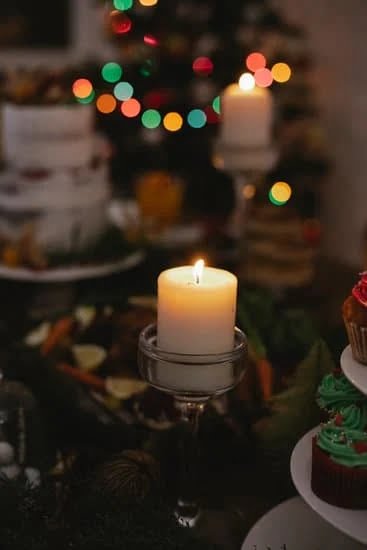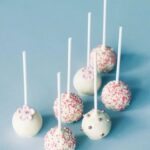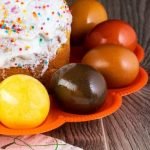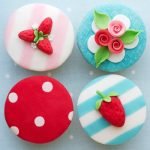Are you wondering how to decorate a layer cake? Layer cakes are a popular and delicious dessert that are perfect for special occasions and celebrations.
In this article, we will explore the art of decorating a layer cake, from essential tools and ingredients to creative decorating ideas and troubleshooting common issues. Whether you’re a beginner or an experienced baker, this guide will provide you with the knowledge and skills to create beautifully decorated layer cakes that are sure to impress.
Layer cakes have been a staple in baking for centuries, with their multi-tiered structure adding both visual appeal and diverse flavor combinations. From classic birthday cakes to elegant wedding creations, layer cakes hold a significant place in the world of baking. We’ll take a look at the history of layer cakes and delve into their modern-day popularity, showcasing their versatility in both traditional and contemporary baking.
Before diving into the decorating process, it’s important to familiarize yourself with the essential tools and ingredients needed for creating visually stunning layer cakes. Additionally, we will explore the significance of selecting the right cake layers for decoration and provide tips on properly preparing the cake for frosting and filling. By understanding these fundamental aspects, you can ensure a smooth and successful decorating experience when it comes to creating your own masterpiece.
Essential Tools and Ingredients
To effectively decorate a layer cake, it’s important to have the right tools and ingredients on hand. Here is a list of essential tools and equipment needed for decorating a layer cake:
- Offset spatula: This tool is essential for applying frosting to the cake layers and creating smooth surfaces.
- Cake turntable: A rotating stand that makes it easier to ice and decorate the cake evenly.
- Piping bags and tips: Useful for creating decorative designs, borders, and writing on the cake.
- Bench scraper: Helps to create clean, straight edges when frosting the sides of the cake.
- Cake leveler: Ensures that each layer of the cake is even in height for a professional look.
In addition to these tools, there are key ingredients that are essential for frosting, fillings, and decorations. Some of these include:
- Buttercream frosting: A versatile frosting that can be flavored and colored as desired.
- Fondant: Ideal for creating smooth, sleek finishes and intricate decorations on cakes.
- Ganache: A rich, chocolate-based icing that adds a decadent touch to any layer cake.
- Filling ingredients: Depending on preference, various fillings such as fruit compotes, custards, or flavored whipped cream can be used between layers.
Having these tools and ingredients at your disposal will make the process of decorating a layer cake much more manageable and enjoyable. Experimenting with different tools and ingredients will further enhance your skills in achieving beautifully decorated layer cakes.
Choosing the Right Cake Layers
When it comes to decorating a layer cake, the choice of cake layers is crucial in achieving the desired outcome. The type of cake layers chosen will determine how well the cake holds up during the decorating process, as well as its overall appearance and taste. Here we will discuss some tips for selecting the appropriate cake layers for decorating, as well as different types of cake layers and their suitability for decoration.
Tips for Selecting Cake Layers
When choosing cake layers for decorating, it’s important to consider the texture and structure of the cakes. Opt for dense and sturdy cake layers that can hold up well to the weight of frosting and decorations. Light, airy cakes may not be suitable for layering and could collapse under the weight of additional layers.
Different Types of Cake Layers
There are various types of cake layers that can be used for decorating a layer cake. Sponge cakes are a popular choice due to their light and fluffy texture, which provides a good base for adding fillings and frosting.
Butter cakes, on the other hand, are denser and moist, making them ideal for stacking and decorating. Other types of cake layers include chiffon, genoise, and chocolate sponge, each with its own unique characteristics that make them suitable for specific decorating techniques.
When considering how to decorate a layer cake, it’s essential to carefully select the right cake layers that will complement the overall design and flavor profile of the finished product. By understanding the qualities of different types of cake layers and following these tips for selection, you can ensure a successful outcome when decorating your layer cake.
Preparing the Cake for Decoration
When it comes to decorating a layer cake, the preparation of the cake layers is just as important as the actual decoration process. Properly preparing the cake for decoration sets the stage for a beautiful and professional-looking finished product. Here are some key steps to take when preparing your cake for decoration:
- Cooling and Leveling: After baking your cake layers, it’s crucial to allow them to cool completely before attempting any decoration. Once cooled, leveling the tops of the cake layers with a serrated knife ensures that each layer will stack evenly.
- Crumb Coating: A crumb coat is a thin layer of frosting applied to the cake before adding the final layer of frosting. This helps to lock in any loose crumbs and creates a smooth surface for decorating.
- Chilling: After applying the crumb coat, it’s important to chill the cake in the refrigerator for at least 30 minutes. This allows the frosting to firm up and provides a solid base for adding additional decorations or layers.
By following these steps, you can ensure that your cake is well-prepared for decorating, leading to stunning results that will impress your friends and family.
Next on our list would be how you can decorate your cakes by using various types of frostings like buttercream, fondant or ganache and also what various techniques you could use while icing your cakes such as piping, spreading with offset spatula etc.
Lastly we’ll talk about issues you might face while decorating your cakes and how you can fix them like dealing with uneven frosting or air bubbles in fondant etc. We’ll also include solutions for these problems so that you achieve a flawless finish on all your decorated cakes.
Decorating Techniques
Decorating a layer cake is an art form that requires precision and creativity. There are various techniques that can be used to achieve a beautifully decorated cake, from crumb coating to intricate designs with different types of frosting. In this section, we will explore the step-by-step process of decorating a layer cake and the various frosting techniques that can be used to create stunning designs.
Crumb Coating and Icing the Cake Layers
Before diving into decorating a layer cake, it is essential to start with the basics – crumb coating and icing the cake layers. Crumb coating involves applying a thin layer of frosting to the entire cake to seal in any loose crumbs.
This step ensures that the final coat of frosting will be smooth and free of visible crumbs. Once the crumb coat has set, the cake can then be iced with a final layer of frosting using a spatula or piping bag for more intricate designs.
Various Frosting Techniques
There are several different frosting techniques that can be used to decorate a layer cake, each creating a unique look and texture. Buttercream frosting is one of the most popular choices due to its versatility and ability to hold its shape for decorative piping.
Fondant, on the other hand, provides a smooth and polished finish, perfect for creating intricate designs or covering an entire cake. Ganache, made from chocolate and cream, offers a rich and glossy finish that is ideal for both filling layers and covering the exterior of the cake.
Adding Decorative Elements
In addition to frosting techniques, there are countless ways to add decorative elements to a layer cake. From piping borders and rosettes to incorporating edible flowers or fruit, there are endless possibilities for creating visually stunning cakes. Edible glitter, sprinkles, and fondant shapes can also be used to add extra flair to your design. The key is to experiment with different techniques and find what works best for your desired aesthetic.
By mastering these decorating techniques, you can elevate your layer cakes from simple desserts to show-stopping centerpieces at any special occasion or celebration. Whether you prefer classic elegance or whimsical charm, there are endless opportunities for creativity when it comes to decorating a layer cake.
Adding Fillings and Layers
Once you have properly prepared and decorated the cake layers, it’s time to add fillings between the layers. This step not only adds flavor but also creates visually pleasing and tasty layers within the cake. When choosing fillings, consider the flavor profile of the cake and the preferences of those who will be enjoying it. Some popular filling options include fruit preserves, flavored buttercreams, chocolate ganache, and pudding.
To add the fillings between the cake layers, start by placing one layer of cake on a flat surface or a cake board. Using a piping bag or offset spatula, spread an even layer of filling on top of the cake layer, making sure to leave a small border around the edge to prevent spillage when the next layer is added.
Gently place the next cake layer on top of the filling and press down lightly to secure it in place. Repeat this process for each additional layer of cake, ensuring that each layer is level and securely in place.
When adding various fillings and layers to your cake, consider experimenting with different combinations to create unique flavor profiles. For example, pairing a vanilla cake with raspberry preserves and lemon buttercream can create a refreshing and delightful combination. Don’t be afraid to get creative with your filling choices to take your layered cake to the next level.
Now that you have successfully added fillings between your cake layers, you are ready to move onto the final step in decorating your layer cake – applying frosting or icing to finish off this delectable dessert masterpiece.
Creative Decorating Ideas
When it comes to decorating a layer cake, the possibilities are truly endless. Whether you’re aiming for a simple and elegant design or a more elaborate and whimsical creation, there are plenty of creative decorating ideas to consider. One popular trend in cake decorating is the use of edible flowers and herbs to add color and texture to the cake. From delicate pansies to vibrant nasturtiums, edible flowers can make a stunning addition to any layer cake.
Another creative idea for decorating a layer cake is the use of different piping techniques to create intricate patterns and designs on the frosting. This can include everything from classic rosettes and swirls to more complex lace or basketweave patterns. By experimenting with different piping tips and techniques, you can customize the look of your layer cake to suit any occasion or theme.
For those looking for a more playful and whimsical approach to decorating a layer cake, consider adding fun and festive embellishments such as sprinkles, edible glitter, or even small candies or chocolate pieces. These colorful additions can bring a sense of joy and celebration to your cake, making it perfect for birthdays, holidays, or other special occasions.
In addition to these ideas, themed and seasonal decorations can also take your layer cake to the next level. Whether it’s creating a winter wonderland with snowflake-shaped decorations or incorporating fresh fruit for a summery feel, themed decorations can add a unique touch to your layer cake that will impress your family and friends.
With these creative decorating ideas in mind, you’ll be well-equipped to make your next layer cake not only delicious but also visually stunning.
Troubleshooting Common Decorating Issues
When decorating a layer cake, there are a few common issues that may arise, but with the right knowledge and techniques, these problems can be easily resolved. One common issue when decorating a layer cake is uneven frosting.
This can happen when the cake layers are not leveled properly or if the frosting is not applied evenly. To fix this issue, try using a bench scraper to smooth out the frosting around the sides of the cake, ensuring an even layer all around.
Another common problem that may arise when decorating a layer cake is air bubbles in the frosting. Air bubbles can create an unattractive look on the surface of the cake. To prevent and fix this issue, try gently tapping the sides of the cake with a spatula or toothpick to release any trapped air bubbles. Additionally, letting the frosted cake sit for a few minutes before smoothing it out can help prevent air bubbles from forming.
If you encounter challenges with your layer cake decoration specifically related to fondant application, wrinkling and tearing are common issues. To avoid these problems, make sure to roll out the fondant evenly and apply it carefully to prevent any folds or tears. If wrinkles do occur, gently smooth them out with your hands or a fondant smoother tool.
Conclusion and Final Tips
In conclusion, learning how to decorate a layer cake can elevate your baking skills and impress your friends and family with beautiful and delicious creations. Through this article, we have explored the essential tools and ingredients needed for decorating a layer cake, as well as the importance of choosing the right cake layers and properly preparing them for decoration. We have also delved into various decorating techniques, adding fillings and layers, creative decorating ideas, and troubleshooting common decorating issues.
As a final tip, one of the most important things to remember when learning how to decorate a layer cake is to practice patience. Decorating a layer cake takes time and precision, so don’t rush through the process. Take your time to crumb coat and chill the cake before frosting it for a smooth finish. Experiment with different frosting techniques and decorations to find your style and create visually pleasing cakes.
Ultimately, honing your skills in decorating layer cakes will not only result in stunning desserts but also bring satisfaction and joy in creating something beautiful from scratch. Whether you’re making a layer cake for a special occasion or simply indulging in some baking therapy at home, mastering the art of decorating a layer cake will undoubtedly be a rewarding experience.
So gather your tools, select some delicious ingredients, and let your creativity flow as you embark on this delightful journey of creating beautiful and delectable layer cakes.
Frequently Asked Questions
How Do You Layer a Cake on Top of Each Other?
Layering a cake on top of each other involves carefully placing one cake layer on a flat, stable surface, then spreading a layer of frosting or filling on top before adding the next layer. Repeat this process for all layers.
What Should I Put in Between Cake Layers?
Between cake layers, you can put various fillings such as fruit preserves, flavored buttercream, chocolate ganache, or even caramel. The filling adds moisture and flavor to the cake while also providing a bonding agent between the layers.
Which Side of a Layer Cake Goes Up?
When assembling a layer cake, it’s typical for the bottom of the last layer to go up so that its flat side is facing upward. This creates a smooth and even surface on the top of the cake for decoration or frosting.

Welcome to our cake decorating blog! My name is Destiny Flores, and I am the proud owner of a cake decorating business named Cake Karma. Our mission is to provide delicious, beautiful cakes for all occasions. We specialize in creating custom cakes that are tailored specifically to each customer’s individual needs and tastes.





